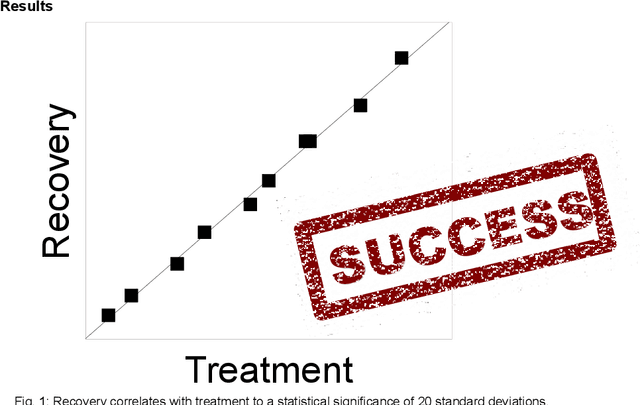Katja Ried
Collective defense of honeybee colonies: experimental results and theoretical modeling
Oct 14, 2020



Abstract:Social insect colonies routinely face large vertebrate predators, against which they need to mount a collective defense. To do so, honeybees use an alarm pheromone that recruits nearby bees into mass stinging of the perceived threat. This alarm pheromone is carried directly on the stinger, hence its concentration builds up during the course of the attack. Here, we investigate how individual bees react to different alarm pheromone concentrations, and how this evolved response-pattern leads to better coordination at the group level. We first present an individual dose-response curve to the alarm pheromone, obtained experimentally. Second, we apply Projective Simulation to model each bee as an artificial learning agent that relies on the pheromone concentration to decide whether to sting or not. If the emergent collective performance benefits the colony, the individual reactions that led to it are enhanced via reinforcement learning, thus emulating natural selection. Predators are modeled in a realistic way so that the effect of factors such as their resistance, their killing rate or their frequency of attacks can be studied. We are able to reproduce the experimentally measured response-pattern of real bees, and to identify the main selection pressures that shaped it. Finally, we apply the model to a case study: by tuning the parameters to represent the environmental conditions of European or African bees, we can predict the difference in aggressiveness observed between these two subspecies.
Development of swarm behavior in artificial learning agents that adapt to different foraging environments
Apr 01, 2020



Abstract:Collective behavior, and swarm formation in particular, has been studied from several perspectives within a large variety of fields, ranging from biology to physics. In this work, we apply Projective Simulation to model each individual as an artificial learning agent that interacts with its neighbors and surroundings in order to make decisions and learn from them. Within a reinforcement learning framework, we discuss one-dimensional learning scenarios where agents need to get to food resources to be rewarded. We observe how different types of collective motion emerge depending on the distance the agents need to travel to reach the resources. For instance, strongly aligned swarms emerge when the food source is placed far away from the region where agents are situated initially. In addition, we study the properties of the individual trajectories that occur within the different types of emergent collective dynamics. Agents trained to find distant resources exhibit individual trajectories with L\'evy-like characteristics as a consequence of the collective motion, whereas agents trained to reach nearby resources present Brownian-like trajectories.
How a minimal learning agent can infer the existence of unobserved variables in a complex environment
Oct 15, 2019



Abstract:According to a mainstream position in contemporary cognitive science and philosophy, the use of abstract compositional concepts is both a necessary and a sufficient condition for the presence of genuine thought. In this article, we show how the ability to develop and utilise abstract conceptual structures can be achieved by a particular kind of learning agents. More specifically, we provide and motivate a concrete operational definition of what it means for these agents to be in possession of abstract concepts, before presenting an explicit example of a minimal architecture that supports this capability. We then proceed to demonstrate how the existence of abstract conceptual structures can be operationally useful in the process of employing previously acquired knowledge in the face of new experiences, thereby vindicating the natural conjecture that the cognitive functions of abstraction and generalisation are closely related. Keywords: concept formation, projective simulation, reinforcement learning, transparent artificial intelligence, theory formation, explainable artificial intelligence (XAI)
Modelling collective motion based on the principle of agency
Dec 04, 2017



Abstract:Collective motion is an intriguing phenomenon, especially considering that it arises from a set of simple rules governing local interactions between individuals. In theoretical models, these rules are normally \emph{assumed} to take a particular form, possibly constrained by heuristic arguments. We propose a new class of models, which describe the individuals as \emph{agents}, capable of deciding for themselves how to act and learning from their experiences. The local interaction rules do not need to be postulated in this model, since they \emph{emerge} from the learning process. We apply this ansatz to a concrete scenario involving marching locusts, in order to model the phenomenon of density-dependent alignment. We show that our learning agent-based model can account for a Fokker-Planck equation that describes the collective motion and, most notably, that the agents can learn the appropriate local interactions, requiring no strong previous assumptions on their form. These results suggest that learning agent-based models are a powerful tool for studying a broader class of problems involving collective motion and animal agency in general.
Inferring causal structure: a quantum advantage
Jun 19, 2014
Abstract:The problem of using observed correlations to infer causal relations is relevant to a wide variety of scientific disciplines. Yet given correlations between just two classical variables, it is impossible to determine whether they arose from a causal influence of one on the other or a common cause influencing both, unless one can implement a randomized intervention. We here consider the problem of causal inference for quantum variables. We introduce causal tomography, which unifies and generalizes conventional quantum tomography schemes to provide a complete solution to the causal inference problem using a quantum analogue of a randomized trial. We furthermore show that, in contrast to the classical case, observed quantum correlations alone can sometimes provide a solution. We implement a quantum-optical experiment that allows us to control the causal relation between two optical modes, and two measurement schemes -- one with and one without randomization -- that extract this relation from the observed correlations. Our results show that entanglement and coherence, known to be central to quantum information processing, also provide a quantum advantage for causal inference.
* 17 pages, 6 figures. Comments welcome
 Add to Chrome
Add to Chrome Add to Firefox
Add to Firefox Add to Edge
Add to Edge